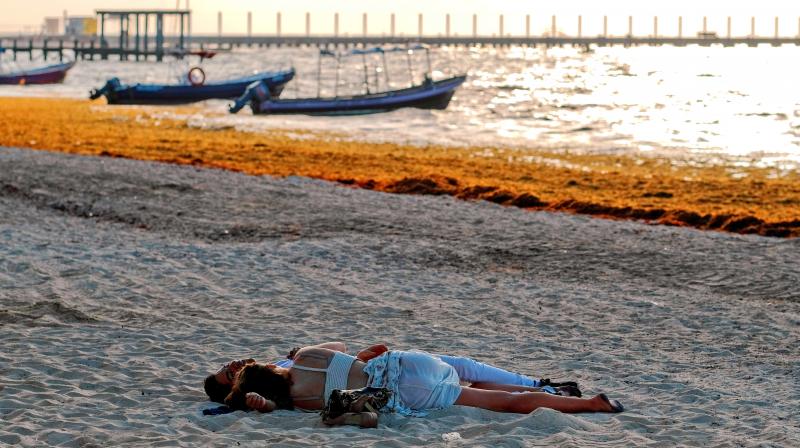Cancun, Belize may not be tourism hotspots soon

Mexico City: Tourists looking for sun and sand in Mexican resorts like Cancun, Playa del Carmen and Tulum have been disgusted by foul-smelling mounds of sargassum, a seaweed-like algae, piling up on beaches and turning turquoise waters brown and experts are warning that it may be the new normal.
Mexico's Riviera Maya Caribbean coast provides half the country's tourism revenues and very little sargassum reached it prior to 2014. But a possible combination of climate change, pollution from fertilisers and ocean flows and currents carrying the algae mats to the Caribbean has caused the problem to explode.
While it may not have the global impact of melting of polar ice, the vast mats of sargassum filling the Caribbean could be one of the more visible climate-change events because of the sheer number of people who visit the region's popular tourist beaches, some officials say. "This is one of the biggest challenges that climate change has caused for the world. This challenge requires a joint, multinational effort and a global commitment," said the government of Mexico's resort-studded coastal state of Quintana Roo.
While tourist arrivals at the Cancun airport were up 3.3 per cent in March over the same month last year, many fear this will not last long with the sargassum befouling white sand beaches and blue waters, as well as the air. Sargassum decomposes with a rotten egg smell. As it decays and sinks to the bottom, it can also smother the coral the Caribbean is known for, and accumulations on beaches can make it harder for sea turtles to nest.
"In my humble opinion it's a disaster that will eventually cripple the tourism, the businesses and sad to say, destroy the local economy," said Jef A Gardner, a frequent visitor to Playa del Carmen from Knoxville, Tennessee. "This is a Caribbean problem on the east coast that goes from Cancun all the way past Ambergris Caye in Belize."
The concerns may not be hyperbole: the sargassum mats appear even worse along parts of Mexico's coast than they did last year. And the problem affects almost all the islands and mainland beaches in the Caribbean to an extent. The US Gulf coast got hit in 2014 and the east coast of Florida is getting sargassum this year.
The algae flooding into the Caribbean is coming from an unexpected source: the tropical Atlantic waters beyond the mouth of the Amazon River. Chuanmin Hu, a professor of oceanography at South Florida University's College of Marine Science, says the sargassum mats appear to be the result of increased nutrient flows and ocean water upwelling that brings nutrients up from the bottom. Prevailing ocean currents carry the algae into the Caribbean, where it can grow further.
He says the cycle is not likely to stop anytime soon. "Because of global climate change we may have increased upwelling, increased air deposition, or increased nutrient source from rivers, so all three may have increased the recent large amounts of sargassum," said Hu.
While he says additional research is needed before definitively linking it all to human activity, he pointed to evidence of "increased use of fertilizer and increased deforestation" as possible culprits, at least as far as the Amazon is concerned. Warming ocean waters are likely to play only a minor role since the area, the tropical Atlantic and Caribbean, has always been pretty warm.
Tourists come to Mexico's Caribbean coast for the sun, sand, snorkelling and turquoise waters. While there are other things to do on the coast, like visiting sinkhole lakes known as cenotes, Mayan ruins and the jungle, the beach remains the prize attraction. And tourists are unlikely to accept brown, algae-filled water.
Local hotel owners and tourism industry workers, which is just about everybody to some extent in Quintana Roo, are feeling abandoned by the federal government, which is planning a fancy tourist train to connect the coast with Mayan ruin sites inland. "With sargassum, there is no Mayan Train," said a slogan launched by local businesses.

